Across its diverse participants from the policy, verification, and scientific communities, the Partnership has shared knowledge and advanced national and international thinking on nuclear disarmament verification. As part of the culmination of Phase I, each of three working groups set out key findings in written reports, or “deliverables,” of its work during Phase I. The final deliverables listed below provide a strong analytic contribution to building the needed tool kit of nuclear disarmament verification concepts and capabilities.
Working Group 1: Monitoring and Verification Objectives, co-chaired by Piet de Klerk (Netherlands) and David Chambers (United Kingdom)
- Deliverable One: A framework document with terms and definitions, principles, and good practices, and a broad flowchart showing possible monitoring and verification activities for key disarmament steps across the nuclear weapons lifecycle.
Download the Pdf - Deliverable Two: A detailed assessment of potential monitoring and verification requirements for monitoring the dismantlement of nuclear warheads, including what information might be needed to satisfy those requirements, and an assessment of the kind of assurance that States would likely seek from verification.
Download the PDF - Deliverable Three: A capacity mapping document that outlines existing skills and areas of expertise applicable to key monitoring and verification activities, and identifies possible gaps; and a needs and planning document to fill gaps and identify priorities for future collaborative efforts.
Download the PDF
Working Group 2: On-Site Inspections, co-chaired by Robert Floyd (Australia) and Marek Sobótka (Poland)
The following three deliverables were produced in a single document entitled, “2016–2017 Working Group 2 Output Report: Inspection Activities and Techniques.”
- Deliverable Four: A document outlining the key elements of OSI for verification of nuclear disarmament undertakings, potential new inspection activities and techniques that could effectively verify compliance with future agreements as well as options for managed access and their applicability at different types of facilities and sites.
- Deliverable Five: A “best practices” document that highlights skills, training requirements, and lessons learned from inspectors and facility operators who have OSI experience in diverse environments as well as objectives and a broad outline for an inspector training course that would serve as a basis of future capacity building.
- Deliverable Six: Proposed approaches and topics for future development of OSI for verification of nuclear disarmament.
Download the PDF
Working Group 3: Technical Challenges and Solutions, co-chaired by Jens Wirstam (Sweden) and Michele Smith (United States)
Deliverables Eight, Nine, and Ten are incorporated into two comprehensive technology matrices.
- Deliverable Seven: A series of presentations, workshops, or seminars on key activities and lessons learned from the joint U.S.-UK technical collaboration on nuclear disarmament verification, the UK-Norway Initiative, and other relevant activities.
Download Summary Document View Supporting Documents - Deliverable Eight: An assessment of existing approaches for warhead authentication, including the systems that support attribute measurements and templates and an outline of other techniques that could increase confidence that something is, in fact, a nuclear warhead.
Download Summary Document View Supporting Documents - Deliverable Nine: The development of a chain of custody paper, presentation, or demonstration involving unique identification and tamper-indicating devices in a specific environment, such as a mock warhead storage area.
Download Summary Document View Supporting Documents - Deliverable Ten: A mapping of existing and potential technical capabilities necessary to enable monitoring and verification at different stages of a nuclear weapon dismantlement process, and the level of confidence the technology brings to monitoring the dismantlement process, with a list that identifies capability gaps and weaknesses to inform future research.
Download Summary Document View Supporting Documents



